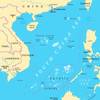Los Angeles Twin Ports Aim Zero-Emissions
The ports of Los Angeles and Long Beach have released a report on the current state of clean cargo-handling equipment technology as they begin working toward the Clean Air Action Plan’s 2030 goal of a zero-emissions fleet at the nation’s largest seaport complex.
A draft assessment was released in April. It examined the current state of technology, operational characteristics, economic considerations, infrastructure availability and commercial readiness relating to cleaner cargo-handling equipment. The updated report incorporates community feedback that is available at this link.
The CAAP also has a goal to transform its fleet of drayage trucks to zero-emissions by 2035. As part of this strategy, the ports committed to developing feasibility assessments every three years for terminal equipment and drayage trucks to determine a path toward meeting those goals.
The first drayage trucks assessment was released earlier this year. The ports plan to continue demonstrating advanced technologies and collecting information to prepare the future studies.
Updated in 2017, the CAAP contains a comprehensive strategy to accelerate progress toward a zero-emissions future while protecting and strengthening the ports’ competitive position in the global economy.
Since 2005, port-related air pollution emissions in San Pedro Bay have dropped 87% for diesel particulate matter, 58% for nitrogen oxides and 97% for sulfur oxides. Targets for reducing greenhouse gases (GHGs) from port-related sources were introduced as part of the 2017 CAAP Update.
The document calls for the ports to reduce GHGs to 40% below 1990 levels by 2030 and 80% below 1990 levels by 2050. The CAAP was originally approved in 2006.
The Port of Los Angeles and Port of Long Beach are the two largest ports in the nation, first and second respectively, and combined are the ninth-largest port complex in the world.
The two ports handle nearly 40% of the nation’s total containerized import traffic and 25% of its total exports. Trade that flows through the San Pedro Bay ports complex generates more than 3 million jobs nationwide.












